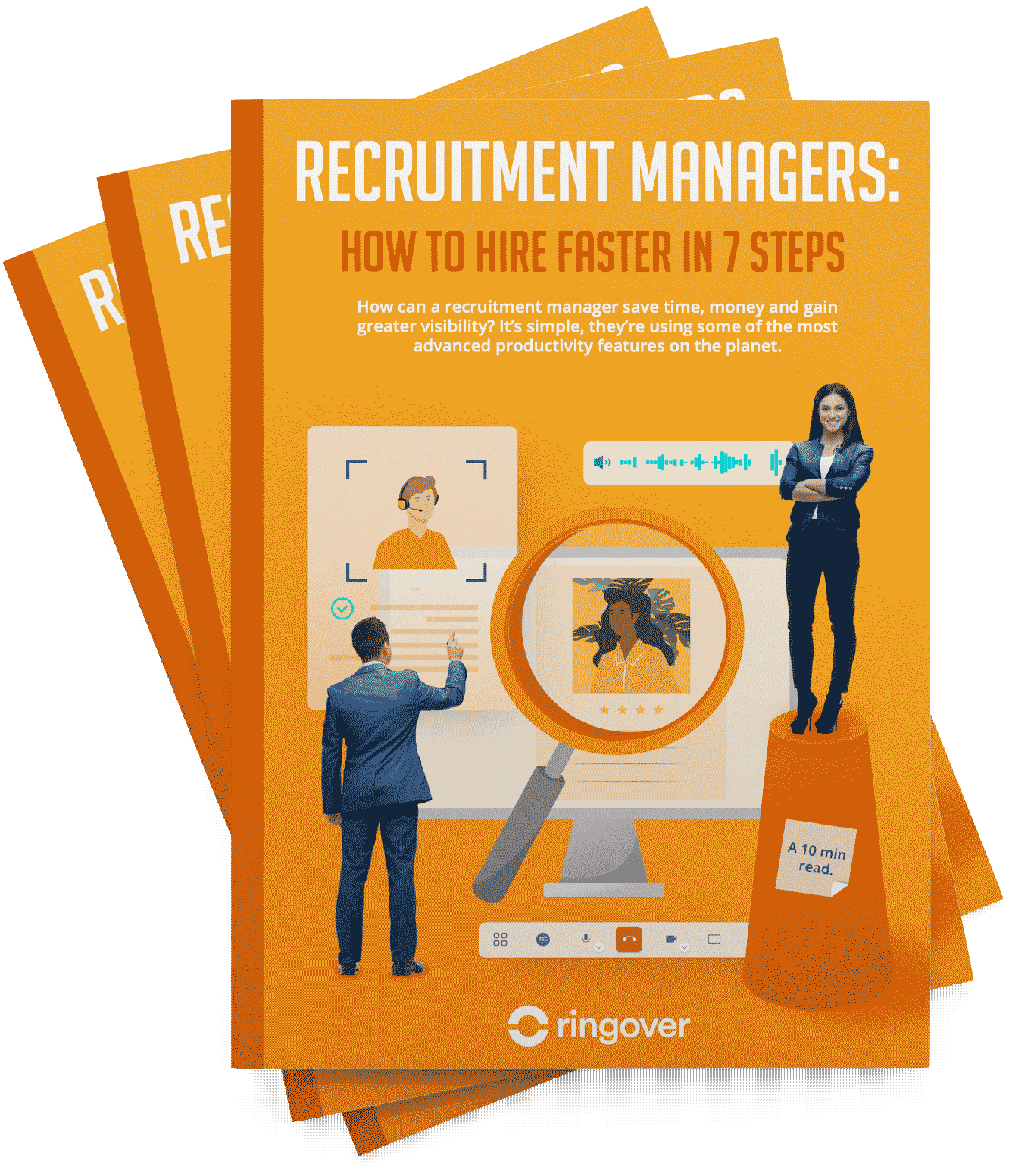In line with this, the UK retirement age has been steadily increasing since the 1990s too, and currently comes at 65 for males and 64 for females.
With over four decades of working life, there should be plenty of time to try out new opportunities, move companies or even change careers. But when job-hunting, are the odds stacked against us as we age? According to a study by The Centre for Ageing Better, a third of people over 50 believe they have been turned down for a job because of their age, and one in five employers believe that age discrimination occurs in their organisation.
Take two people of different ages with the same skills and qualifications, does youth or experience give applicants the edge?
To find out, we created CVs for four candidates of different age groups: A 21-year-old (recent graduate), 35-year-old, 50-year-old and a 60-year-old. We applied to some of the most common jobs across five different industries:
- Finance manager
- Primary school teacher
- Retail assistant
- Nurse
- Road transport/ HGV driver
We then applied to 100 postings per role, and monitored the responses for four weeks, between the 22/04/2024 and 21/05/2024.
Key findings
- Out of 2,000 applications, one in four received a human response (25.9%) –14.6% further questions or interview offers, and 11.4% rejections
- The 50-year-old applicant received 81 positive responses out of 500 applications (16.2%) – the most positive responses of all applicants.
- The 21-year-old received 64 positive responses (12.8% of applications) – the smallest number of positive responses.
- Finance management favours experience: the 60-year-old applicant received 3x more positive responses than the 21-year-old applicant.
- Nurse applications had the highest response rates (15%): and the 35-year-old and 50-year-old had the best chances (8% positive responses)
- Retail Assistant was the only job type where the 21-year-old has the greatest chance of being hired (5.6%)
- A 35-year-old applicant most likely (7.6%) to score a road transport/ truck driver role.
How many responses did we get overall?
In this study we counted responses which asked further questions, informal phone calls, conversations and interviews as a positive response. Rejections were counted as bad responses. Below, you can see an example of a positive response, and an example of a negative response:
Hey there,
Thank you for sending me your CV via my indeed AD.
I would love to have a chat with you about future opportunities - are you free tomorrow for a call?
Thank you!
Thank you for applying to [company name]
Unfortunately, Press Start Ltd has moved to the next step in their hiring process, and your application was not selected at this time.
Overall, out of 2,000 applications, we received 518 responses altogether (just over one in four applications received a response). In total, we received 291 positive responses (14.6%) and 227 negative responses (11.4%).


Develop strong relationships with your candidates and clients by deploying an omnichannel communications contact centre software.
Who received the most good responses?
Out of 500 applications each (100 per job type), the 21-year-old received 64 positive responses (12.8% of applications), the 35-year-old 74 (14.8%), the 50-year-old 81 (16.2%) and the 60-year-old 72 (14.4%).
This means that overall, the 50-year-old candidate had the best positive application response rate, although the overall margin between the ages was just 3.4%.

Who received the most rejections?
In our study, only one in four applications received a response at all. Getting a rejection or negative response at least offers some closure on the application process. Again, the difference here was 4.2% between the lowest (50-year-old with 9.6%) and greatest number of rejections (35-year-old with 13.4%).
The 21-year-old received 56 outright rejections (11.2%), the 35-year-old 67 (13.4%), the 50-year-old 48 (9.6%) and the 60-year-old 56 (11.2%).
But how do these results differ depending on the job role? Do some jobs show a bias towards certain application ages more?
Finance manager
The average base pay for a finance manager in the UK is £42K - £65K per year – the highest salary in the study. Overall, the response rate for the Finance Manager applications was the lowest in the study at 3.8% (2.3% positive responses, 1.5% negative responses).
Perhaps reflecting the seniority of the position, older applicants performed better in this study. The 60-year-old applicant received three times the number of positive responses (9) compared to the 21-year-old applicant (3).

Nurse
In the UK there are 731,058 nurses on the permanent NMC register. The average NHS pay ranges between £23,687 to £60,031 and Nursing is a broad field, with plenty of opportunities to specialise and see career progression.
In this study, Nurse applications had the highest overall response rate (15%). However, you were slightly more likely to receive a negative response (8.5%) than a positive response (6.5%).
For this job type, the 35-year-old and 50 -year-old applicant performed equally well at 8% positive response rate. The 21-year-old received a 4.4% positive response rate and then 60-year-old 5.6%.

Retail assistant
Retail and sales assistant is the most commonly reported job in the 2021 census, employing more than 1.1 million people. This job type had the lowest reported average salary at £26,141 per year or £10.24 per hour.
The overall response rate for a retail assistant job was 11%, and was tipped towards negative responses/rejections: at 4.4% positive, 6.6% negative. This was the only job type where the youngest applicant – the 21-year-old – had the greatest number of positive responses (5.6%).

Road transport workers / HGV drivers
According to Indeed, the average salary of a truck driver is £38,003 per year. To keep things consistent across the study, we applied to all jobs with female applicants, but road transport workers and HGV drivers are often male – in fact, 99% of the driving workforce in the UK are male.
Trucking is not only a male dominated field, but according to the 2021 census, half of heavy goods vehicle (HGV) drivers are also aged 50 years or older. The response rate for a road transport/ HGV driver job in the study was 9.1% (5.6% positive and 3.3% negative) but in our research, the 35-year-old applicant had the highest positive response rate (7.6%) – although the oldest applicant (60-year-old) had 1.6% better response rate than the youngest applicant in the study (4%).

Primary school teacher
There are approximately 570,265 teachers in the UK and although within teaching, secondary school education represents the greatest proportion of teachers, because secondary educators typically specialise in one subject we applied to primary school teaching roles to broaden the number of relevant job opportunities.
A qualified teacher (QTS) receives a minimum salary of £30,000 and a primary school teacher's salary typically ranges between £30,000 and £47,000 per year.
After Nurse applications, applications for the primary school teacher role had the 2nd highest response rate at 13.1% overall. This job type also had the highest percentage of positive responses in the study (10.3% positive response rate and a 2.8% negative response rate).
The 50-year-old applicant had the greatest positive response rate (13.2%) in the job type and in the study overall.

Conclusion
At the age of 50, the average person has 15 years of work ahead of them. This study found that positively, experience is valued by hirers – and in fact, it was hardest for the recent graduate, with the same skills and qualifications, to receive a positive response to an application.
This also doesn't mean that if you are successful at landing a job, you will see as much career progression as a younger applicant (a survey of women over 60 found that they felt they were deemed “unworthy of advancement at work). And, a decade later, this study found that despite having the same skills and qualifications, and more experience, at the age of 60 your chances have declined by an average of 10.3%.
There is still a lot of work to do to challenge the perception of older people in the workplace, but in the five sample job types we examined, we found that the age of the applicant had a maximum 3.4% effect on the likelihood of a positive response.
Methodology
To find out, we created CVs for four candidates of different age groups. A 21-year-old (recent graduate), 35-year-old (Millennial), 50-year-old (Gen-X) and a 60-year-old (boomer). Names were chosen from the most popular names and surnames from the date of birth. The date of birth was included in the candidate info and also in the email address of the candidate (e.g. ‘[email protected]). CVs were drawn up with the same skills and certifications, but with an appropriate amount of work experience depending on the age and different formatting styles.
The five jobs were chosen to reflect different industries and job types which have a high number of employees according to the most recent ONS census (2021), and varying pay brackets. They were: finance manager roles, primary-teacher teacher roles, retail assistant roles, nurse roles and road transport/ driver roles. We then applied to 100 postings per role on Indeed, and monitored the responses between the 22/04/2024 - 21/05/2024.
Published on July 8, 2024.




